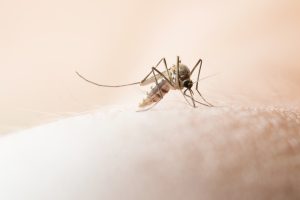Lung cancer is one of the most common types of cancer in the world. Asia contributes to around 59.6% of all cases, globally.
Lung Cancer is the number one cause of cancer deaths in men while the second leading cause of cancer deaths in women. Active smoking is the number one risk factor for lung cancer. But not all who have lung cancer are smokers.
Active smoking is still seen as the leading cause of lung cancer. 80% of cases are from active smoking. But not all people who get lung cancer are active smokers. According to studies, one-third of all lung cancer patients in East Asia are non-smokers.
Dr. Wong Seng Weng, Medical Director and Consultant at The Cancer Centre, and Yu Hui, a stage 4 lung cancer patient who is a non-smoker, as she shares about her journey with lung cancer.
Non-smokers are referred to as those who do not currently smoke but may have smoked 100 or so cigarettes at some point in their life. Some people are considered never-smokers, or those who have never smoked or who have smoked fewer than 100 cigarettes in their lifetimes. Among non-smokers, women are more likely than men to develop lung cancer.
Causes of lung cancer among non-smokers
Four main factors contribute to the risk among non-smokers. These are exposure to harmful substances, occupational exposure to carcinogenic chemicals, second-hand smoking, and family history.
-
Exposure to harmful substances
Exposure to the following substances may add to the risk of lung cancer among non-smokers.
-
Radon
Radon is a radioactive gas produced in the natural breakdown of uranium, thorium, or radium in soil, rock, and water. People are exposed to this when breathing the air that comes through cracks and gaps in the building. Radon exposure is the leading cause of lung cancer among non-smokers.
With this, experts recommend getting homes tested to know whether it has a high or low risk of radon exposure.
-
Asbestos
Asbestos is used in construction as an effective insulator. It is added to different materials such as cloth, paper, plastic, and cement to make them stronger. But when asbestos dust is released into the air and inhaled, it can cause serious lung problems, such as mesothelioma or damage to the lung lining. Mesothelioma is a cancerous tumour that begins with the mesothelium, a membrane that lines and protects the lung, heart, and abdominal cavity.
Asbestos exposure can be prevented by wearing proper protective equipment when working and dealing with asbestos dust and particles.
-
Occupational exposure to carcinogenic chemicals
Specific occupations can lead to high exposure to carcinogenic chemicals such as arsenic, chromium compounds, nickel compounds, and polycyclic aromatic hydrocarbons (PAHs). These occupations include truck driving, sandblasting, metalworking, printing, ceramic making, uranium mining, and glass manufacturing.
-
Exposure to second-hand smoke
Breathing in second-hand smoke is also one of the possible causes of lung cancer among non-smokers. This smoke may come directly from the smoker’s mouth or from the smoke that comes out from the end part of cigarettes. Being exposed to cigarette smoke can cause harm to your body and worse, may lead to different serious diseases such as lung cancer.
-
Genetics or family history
History in the family can also add to the increased risk. Though this is not always the case, when you have a history of lung cancer in your family, it is best to talk to your doctor to check your medical condition and respond appropriately.
Common types of lung cancer among non-smokers
There are two types of lung cancer: Non-Small Cell lung cancer (NSCLC) and Small Cell Lung Cancer (SCLC). The most common type diagnosed among non-smokers is NSCLC.
-
Adenocarcinoma
An adenocarcinoma is a form of NSCLC and the most common type among women, non-smokers, and in Asia. It is a malignant tumour with glandular differentiation or mucin production by tumour cells.
-
Mesothelioma
Mesothelioma is the result of asbestos exposure. It is a cancerous tumour that begins with the mesothelium, a membrane that lines and protects the lung, heart, and abdominal cavity. There are three types of mesothelioma namely, pleural mesothelioma, peritoneal mesothelioma, and pericardial mesothelioma. Pleural mesothelioma is the most common type of mesothelioma.
-
Squamous Cell Carcinomas
Squamous cell carcinomas are associated with tumours that grow in the centre of the lungs, usually in the larger bronchi.
Symptoms of lung cancer among non-smokers
The symptoms among smokers and non-smokers are usually the same. These common symptoms may include chronic cough, coughing blood, chest pain, and difficulty of breathing.
And because these symptoms may also be the symptoms of diseases other than lung cancer, it is still better to get a proper diagnosis to know the specific health conditions and receive proper treatment.
Treatments of lung cancer among non-smokers
If cancer hasn’t yet spread, surgery is also the treatment conducted among non-smoker patients. Surgeons will remove the affected tissue or tumour. Because they never smoke, have stopped smoking, and have healthier lungs than smokers, non-smoker patients can endure surgeries better.
On the other hand, if cancer has already spread, other treatments available are chemotherapy, radiation therapy, and targeted therapy.
Conclusion
Non-smokers are not exempted from the risk of having lung cancer. Because of other factors such as exposure to harmful chemicals, occupational hazards, second-hand smoking, and even family history, they are still at risk to have it. With this, extra precautions and a healthy lifestyle should be observed and practised to minimize the risk and prevent worse situations.













